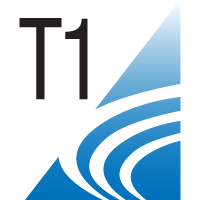Vestibular (V)
LM315 - Motion Sickness Pathophysiology and Clinical Presentation

Jamie Bogle, AuD, PhD
Assistant Professor, Mayo Clinic College of Medicine and Science
Mayo Clinic Arizona
Scottsdale, ArizonaDisclosure(s): No financial or nonfinancial relationships to disclose.
Lead Presenter(s)
Motion sickness is common in the general population and may be more prevalent in specific vestibular disorders. Hypotheses regarding the underlying mechanism for motion sickness focus on the vestibular system, with otolithic mass asymmetry and/or intralabyrinthine imbalance as contributors. Microgravity studies provide a basis for our understanding of motion sickness; however, these mechanisms are complex and vary depending on the offending stimulus. This presentation provides the participant with updated understanding of the pathophysiology of motion sickness and how this presents in a patient with dizziness. Recommended clinical tools and protocol additions will be reviewed and future directions will be discussed.
Summary:
Motion sickness is common in the general population and may be more prevalent in specific vestibular disorders. Most clinicians working in vestibular diagnostics encounter motion sickness either as part of the patient’s symptom burden, or as a previous concern for the patient. Visual-vestibular conflict is the presumed cause of motion sickness and individuals with abnormal central processing are more at risk (e.g., migraine, concussion). Additional hypotheses regarding the underlying mechanism for motion sickness focus on the vestibular system, with otolithic mass asymmetry and/or intralabyrinthine imbalance as contributors. The intralabyrinthine hypothesis is less discussed in the literature, but may provide additional information on identification and management of those with motion sickness. Aviation and microgravity studies provide a basis for our understanding of motion sickness, particularly in how this relates to extreme environments. Motion sickness mechanisms are complex and vary depending on the offending stimulus, duration of exposure, and individual susceptibility. This presentation provides the participant with updated understanding of the pathophysiology of motion sickness and how this presents in a patient with dizziness. Recommended clinical tools and protocol additions will be reviewed and future directions will be discussed.
Learning Objectives:
- Identify the presumed pathways for motion sickness generation
- Review available clinical tools for assessing motion sickness
- Describe how motion sickness may present in various vestibular pathologies

